
|
ADINA FEA / CFD / FSI is widely used in biomechanical applications such as Implant, Prosthetic and Pharmaceutical applications. The following are some of the reasons for this widespread adoption: · Advanced material models · Reliable and efficient element formulations, including large deformation and finite strain capabilities · Robust contact algorithms · Fast and robust solvers · CFD, general Navier-Stokes fluid · State-of-the-art fluid-structure interaction capabilities for modeling the interaction between general nonlinear structures and general Navier-Stokes fluids · Comprehensive multiphysics capabilities
Some applications of ADINA FEA / CFD in biomechanics include the modeling of cell and tissue mechanics, cardiovascular mechanics, cerebrospinal mechanics, orthopedics, eye diseases, LASIK surgery, contact lenses, dental implants, drug delivery, ventricular assist devices, spine mechanics, carpal tunnel, implant/prosthetic design, meniscus replacement, artificial lungs, vocal folds, upper airways, bioreactors, artificial heart valves, heart surgery, tissue ablation, stents, and bile flow. |
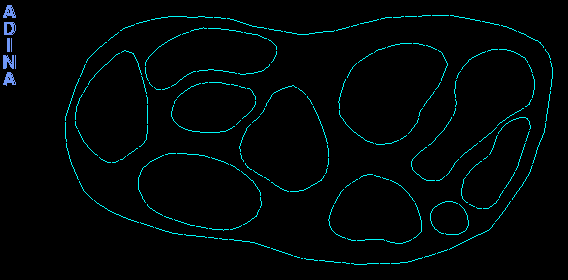
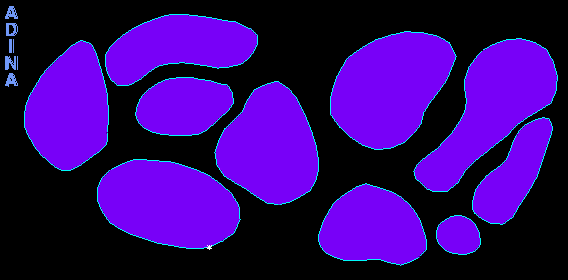
|
ADINA FEA / CFD / FSI Analysis Helps Understand Carpal Tunnel Syndrome |
|
CFD Fluid results shown on left and FEA Structural results on right. Contact stresses can clearly be seen |
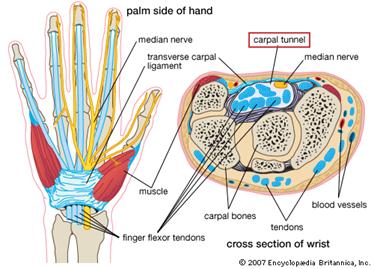
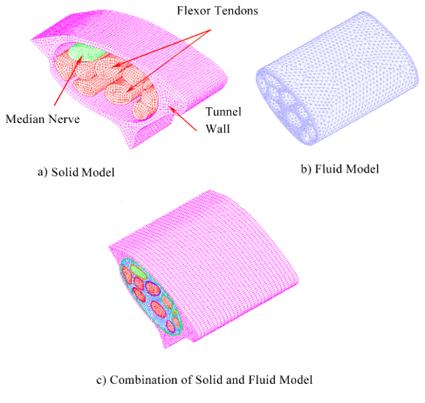
|
Anatomy of Human Wrist and Carpal Tunnel |
|
ADINA model used in analysis. Geometry reconstructed from MRI images |
|
Courtesy of C. Ko, J. Goetz and T.D. Brown, Department of Orthopaedics and Rehabilitation, University of Iowa, Iowa City. |
|
ADINA FEA / CFD / FSI Analysis in Brian Dynamics |
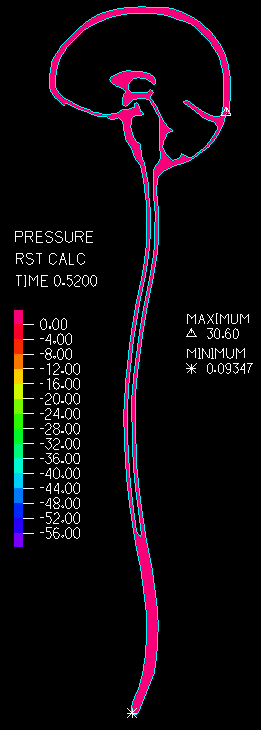
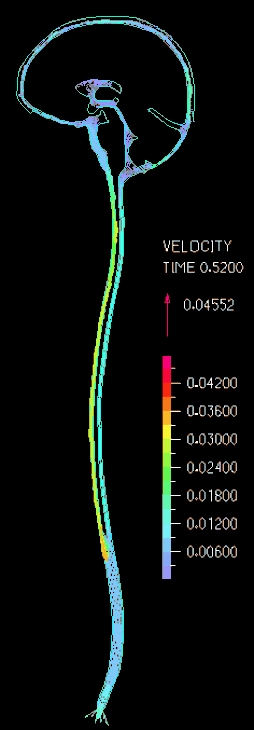
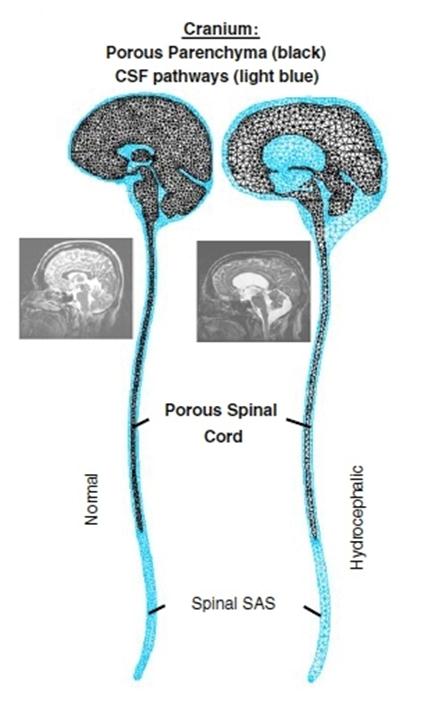
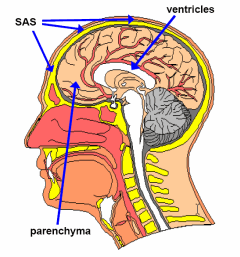
|
Thorough understanding of the cerebrospinal fluid dynamics and its complex interaction with the brain tissues is an important step in understanding the causes of different abnormalities in the central nervous system and designing potential remedies.
Here is a study of the dynamics of the cerebrospinal fluid (CSF) and its interactions with the brain tissues using ADINA FEA / CFD / FSI, which offers some explanations for the potential causes of hydrocephalus. |
|
A schematic of the different parts of the brain is shown. The cerebrospinal fluid flows through the ventricles, the cerebral and spinal subarachnoid spaces (SAS), and the porous parenchyma in a pulsatile manner. The dynamics of the blood and cerebrospinal fluid flows result in deformations of the brain tissues. The aim of this study is to use an anatomically accurate coupled fluid structure system to study the cerebrospinal fluid dynamics.
MRI scan images of normal and hydrocephalic subjects are used for constructing the patient-specific model geometries and anatomically accurate poroelastic finite element models. Each finite element model (far left) includes the cerebrospinal fluid, the brain parenchyma and the spinal canal. |
|
ADINA FEA / CFD / FSI Analysis of Aortic Valve |
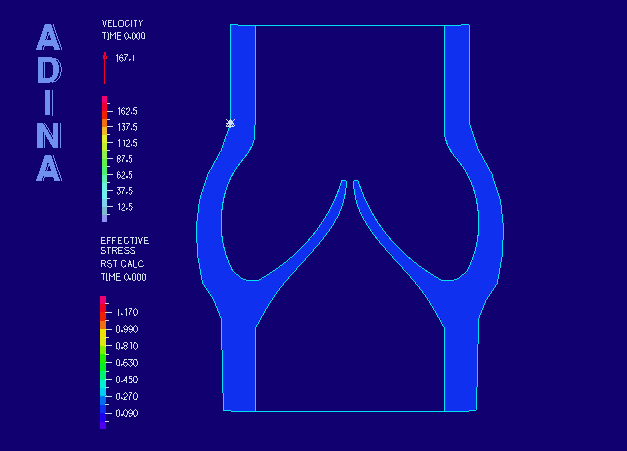
|
An aortic valve is modelled with ADINA FEA / CFD / FSI. The aortic root and valve are represented by a two-dimensional plane strain mesh. A sinusoidal pressure of 14 mmHg is applied to the ventricular face. Blood is treated as a slightly compressible Newtonian fluid with a viscosity of 4.6 centipoise, corresponding approximately to an experimentally determined shear rate of 180/s at 37°C. Both the leaflets and the aortic root are modeled as isotropic Neo-Hookean large-deformation solids with a constant of 50 kPa.
Though it is well known that both structures are highly anisotropic, this plane strain example illustrates how ADINA effectively handles the difficult problem of the contact of two submerged cardiac leaflets.
Problem provided by Dr. Daniel Einstein, Univ. of Washington. |
|
ADINA FEA / CFD / FSI Analysis for Heart Surgery |
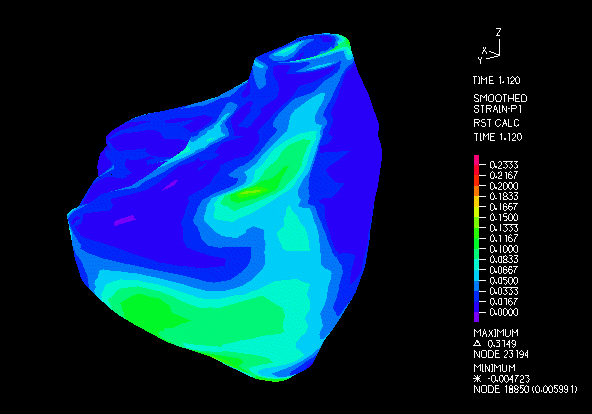
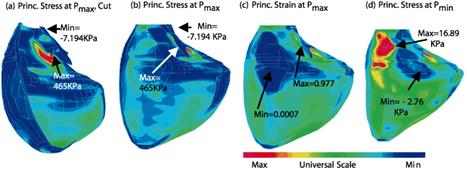
|
Here we present a heart, patient-specific, right/left ventricle and patch combination model with ADINA FEA / CFD / FSI. The objective is to evaluate and optimize a surgical procedure and patch design for a human heart pulmonary valve replacement/insertion.
Cardiac Magnetic Resonance (CMR) imaging studies were performed at the Children's Hospital Boston and the Harvard Medical School. |

|
Tel: +44 (0)121 703 9236 or e-mail: info@pdslimited.com © Copyright Product Development Services Ltd. All rights reserved 2012 |
|
INDUSTRIES |
|